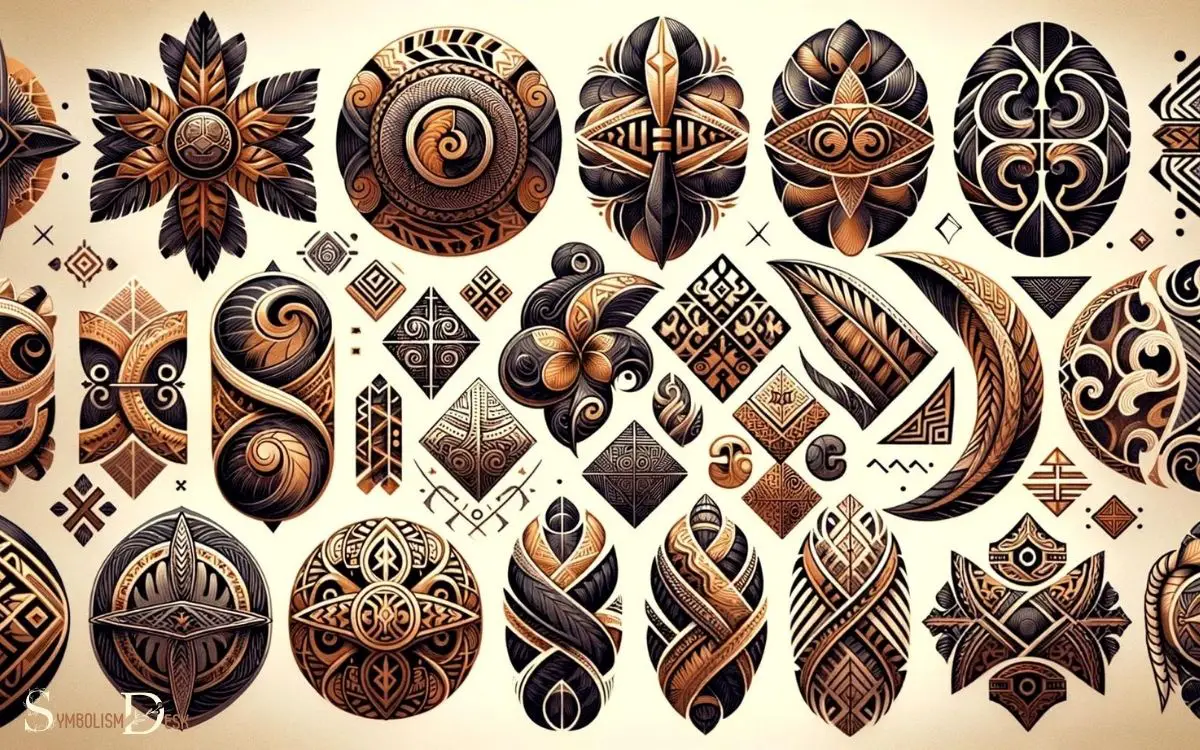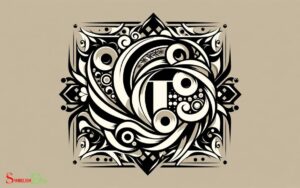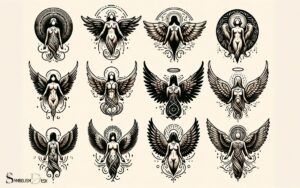Roman Symbols and Meanings for Tattoos: Eagle!
Roman symbols for tattoos often include iconic imagery such as the eagle, SPQR, gladiator helmets, and various gods and goddesses.
These symbols carry deep meanings of power, honor, and the rich legacy of Roman culture. Individuals choose these designs to connect with the history, mythology, and values of ancient Rome.
Roman symbols encompass a variety of images and icons that reflect the beliefs, history, and mythology of ancient Rome.
For example:
- Eagle (Aquila): Representing strength, courage, and the Roman Empire’s expanse.
- SPQR: An acronym for ‘Senatus Populusque Romanus,’ symbolizing the Roman Republic’s government.
- Gladiator Helmet: Denoting bravery, combat skill, and the gladiator’s spirit.
- Gods and Goddesses: Like Venus (love) or Mars (war), representing different aspects of life and spirituality.
These symbols are chosen for tattoos to express personal values, interests in Roman history, or to pay tribute to the timeless stories from the ancient world. Some individuals may also opt for designs inspired by other ancient civilizations, such as Aztec symbols for tattoos, which carry deep cultural and spiritual meanings. These symbols often represent strength, protection, or the natural forces believed to guide human existence. By blending Roman and Aztec influences, tattoo enthusiasts can create unique artwork that showcases a fusion of their diverse inspirations.
Roman symbol tattoos offer a connection to the empire’s grandeur, echoing the strength and wisdom of an era long past.

Key Takeaway
The Importance of Roman Symbols in Tattoo Art
The importance of Roman symbols in tattoo art lies in their rich historical significance and enduring cultural relevance.
These symbols have deep roots in ancient Roman civilization, representing values, beliefs, and stories that continue to resonate today.
From the iconic imagery of the Roman eagle to the powerful symbolism of the laurel wreath, each symbol carries a unique story that connects the modern individual to the ancient world.
Incorporating Roman symbols into tattoo art is a way of honoring and preserving the legacy of the Roman Empire, as well as expressing personal connections to its enduring influence on art, law, language, and government.
Understanding the significance of these symbols adds a layer of depth and meaning to the artwork, creating a bridge between the past and the present.
This rich historical significance transitions into exploring gods and goddesses in Roman symbolism.
Exploring Gods and Goddesses in Roman Symbolism
Roman mythology is rich with gods and goddesses, each representing different aspects of life and nature.
The deities in Roman symbols hold significant meaning and were often depicted in various art forms, including tattoos.
Understanding the symbolic significance of these gods and goddesses provides insight into the deep-rooted beliefs and values of Roman culture.
Deities in Roman Symbols
Exploring the gods and goddesses in Roman symbolism reveals a rich and diverse pantheon of deities with distinct attributes and meanings.
The Roman deities were often depicted in artwork and symbolism, each representing different aspects of life and the natural world.
Some of the key deities in Roman symbols include:
- Jupiter (Jove): The king of the gods, associated with thunder and lightning, and often depicted with an eagle.
- Venus: The goddess of love, beauty, and fertility, symbolized by roses, myrtles, and dolphins.
- Mars: The god of war, often represented by a helmet, shield, and spear, symbolizing strength and courage.
- Minerva: The goddess of wisdom, strategic warfare, and the arts, commonly depicted with an owl and a spear.
These deities played significant roles in Roman mythology and continue to inspire symbolism and tattoos today.
Symbolic Significance of Gods
Gods and goddesses in Roman symbolism embody various attributes and meanings, shaping the cultural and artistic landscape of ancient Rome. Each deity represented specific aspects of life, nature, and human experience.
For instance, Jupiter, the king of the gods, symbolized power, leadership, and protection. Venus, the goddess of love and beauty, represented affection, desire, and fertility. Mars, the god of war, stood for strength, courage, and victory in battle.
These deities weren’t just figures of worship but also served as symbols of Roman virtues and ideals.
Their depictions in art and literature reflected the values and beliefs held by the Roman people, and their influence can still be seen in modern interpretations of Roman symbolism, including tattoos and other forms of artistic expression.
Embodying Strength and Power Through Roman Emblems
Roman emblems have long been associated with strength and power, serving as visual representations of the ancient virtues held in high regard.
These symbols embody the resilience and determination of the Roman people, reflecting the enduring legacy of their civilization.
The strength of Roman imagery continues to captivate individuals seeking to harness the power and fortitude it represents.
Symbolism in Roman Tattoos
The Roman symbols used in tattoos embody strength and power through their powerful emblems.
Roman tattoos often represent concepts such as bravery, honor, and resilience, making them popular choices for individuals seeking to symbolize their inner strength and fortitude.
Here are some common Roman symbols and their meanings often used in tattoos:
- Eagle: Symbolizes power, courage, and the divine.
- Laurel Wreath: Represents victory, achievement, and honor.
- SPQR: Stands for ‘Senatus Populusque Romanus,’ meaning ‘The Senate and People of Rome,’ symbolizing civic pride and loyalty.
- Gladiator Helmet: Signifies bravery, determination, and the willingness to fight for what’s right.
These symbols hold deep significance and are a testament to the enduring strength and power of the Roman civilization.
Transitioning into the subsequent section, these emblems also play a vital role in representing ancient virtues.
Representing Ancient Virtues
How did ancient Romans embody strength and power through the use of Roman emblems in their society?
The Romans revered virtues such as courage, loyalty, and discipline, and they used symbols to represent these qualities.
The eagle, known as the aquila, was a powerful emblem of Rome’s military might and the bravery of its soldiers.
The image of a she-wolf nursing Romulus and Remus symbolized the founding of Rome and the strength of its people.
Additionally, the laurel wreath was a symbol of victory and honor, often worn by triumphant generals and emperors.
These emblems served as a constant reminder of the virtues that the Romans held dear and aspired to embody.
Today, individuals seeking to emulate the strength and power of ancient Rome may choose to incorporate these symbols into their tattoos as a representation of these enduring virtues.
Strength of Roman Imagery
Embodying strength and power through Roman emblems is a timeless practice that continues to inspire individuals seeking to convey resilience and fortitude in their tattoos.
The strength of Roman imagery is often represented by the following:
- The Eagle: Symbolizing power and courage, the eagle was a prominent emblem in Roman military standards, signifying dominance and authority.
- The Lion: As a symbol of courage and leadership, the lion embodies strength and fearlessness, often depicted in Roman art to convey these traits.
- The Laurel Wreath: Representing victory and honor, the laurel wreath was worn by triumphant warriors and leaders, symbolizing their strength and success.
- The Gladiator: Depicted in combat, gladiators symbolize resilience, endurance, and the ability to overcome adversity, embodying the strength of the human spirit.
Such symbols continue to inspire individuals to portray strength and power through their tattoos, reflecting the enduring significance of Roman imagery.
This strength is further exemplified in the unrivaled mystique of Roman mythological creatures.
Unraveling the Mystique of Roman Mythological Creatures
Unveiling the captivating allure of Roman mythological creatures, one can explore the rich symbolism and significance behind these ancient beings for tattoo inspiration. Roman mythology is replete with a diverse array of creatures, each with its own symbolism and meaning.
For example, the majestic griffin, a creature with the body of a lion and the head and wings of an eagle, represents courage, strength, and protection.
The serpent, often associated with healing and transformation, holds deep significance in Roman mythology.
Meanwhile, the fierce and loyal Cerberus, the three-headed dog guarding the gates of the underworld, symbolizes protection and guardianship.
Exploring these mythological creatures can provide a unique and meaningful source of inspiration for those considering Roman-themed tattoos, offering a connection to ancient beliefs and archetypal symbolism.
Transitioning into the subsequent section about the ‘symbolism of Roman numerals in tattoo design’, these ancient numbers hold a rich history and significance that can be incorporated into meaningful tattoo designs.
Symbolism of Roman Numerals in Tattoo Design
Continuing from the exploration of Roman mythological creatures, Roman numerals hold historical significance that can be incorporated into meaningful tattoo designs.
When considering the symbolism of Roman numerals in tattoo design, individuals may find the following aspects intriguing:
- Personal Significance: Roman numerals can represent dates that hold personal importance, such as birthdays, anniversaries, or the birth of a child.
- Timelessness: The use of Roman numerals in tattoos can symbolize the concept of timelessness, linking the past with the present and the future.
- Elegance and Sophistication: The clean and structured lines of Roman numerals lend an air of elegance and sophistication to tattoo designs.
- Cultural and Historical Connection: Incorporating Roman numerals into a tattoo can symbolize a connection to ancient Roman culture and history, reflecting an appreciation for classical knowledge and achievements.
Capturing Victory and Triumph With Roman Symbols
How can Roman symbols be utilized to represent victory and triumph in tattoo designs?
The Romans had a rich tapestry of symbols that evoked the themes of victory and triumph. One such symbol is the laurel wreath, which was awarded to victorious generals and emperors in ancient Rome.
Incorporating a laurel wreath into a tattoo design can symbolize achievement and overcoming challenges.
Another powerful symbol is the eagle, which was associated with Jupiter, the king of the gods, and was often used as a military emblem. An eagle tattoo can convey strength, courage, and the ability to soar above adversity.
Additionally, the fasces, a bundle of rods with an axe, symbolized authority and unity. Utilizing these symbols in tattoo designs can capture the essence of victory and triumph in a timeless and meaningful way.
The Timeless Allure of Roman Cultural Icons
Roman cultural icons continue to captivate enthusiasts of history and art with their enduring appeal and significance.
The timeless allure of Roman cultural icons is evident in their widespread representation in various forms of art and media.
The enduring appeal of Roman cultural icons can be attributed to their rich historical significance, timeless aesthetic appeal, and profound cultural influence.
These icons continue to inspire contemporary art, literature, and fashion, showcasing their enduring relevance and appeal.
The enduring significance of Roman cultural icons is evident in their widespread use as symbols of strength, power, and resilience.
From sculptures and paintings to modern tattoos, these cultural icons continue to fascinate and inspire individuals across the globe, transcending time and geography.
Conclusion
Roman symbols have stood the test of time as powerful and meaningful elements in tattoo art. From gods and goddesses to mythological creatures, these symbols embody strength, power, and victory.
The allure of Roman cultural icons continues to inspire tattoo enthusiasts to capture the essence of ancient Rome on their skin.
So, why not explore the rich history and symbolism of Roman tattoos for your next ink?






